GARDENING LUNACY
Lunar Influences
For no apparent reason, my seedlings sometimes take longer than usual to poke up through the soil. Or one day’s transplants get off to a rousing start right after planting, while another day’s transplants sulk for a while before they grow. Fickle plants, or is the problem perhaps with the moon?
Some gardeners believe that the phases of the moon dictate the best times for gardening. No one has told me that my garden will be a flop if I ignore the moon, but paying attention to it as I go about my gardening activities will “take advantage of the impetus provided by nature” (as one moon-gardener has stated). Old-time gardeners used to say, “Plant potatoes by the dark of the moon.”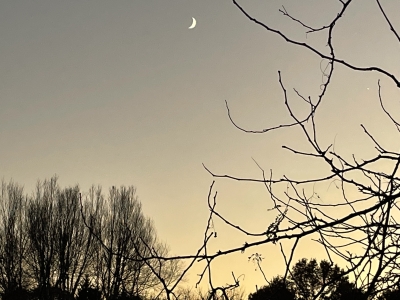
The Details
For some moon-gardeners, instructions are more refined, taking into consideration the sign of the zodiac along with the phase of the moon. Planting is not the only activity covered. There are ideal days for fertilizing (with different days for organic or synthetic fertilizers), for mowing the lawn (depending on whether the goal is for quicker growth or slower growth), for harvesting, and even for making pickles.
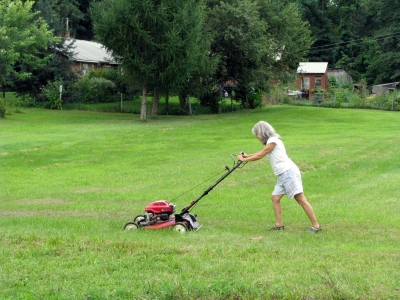
Is this the best moon phase for mowing?
One year, to get the most beauty from my flowers I was supposed to set transplants out on June 6.

I hope these delphinium seedlings will be ready by June 6
Detailed instructions can be simplified for those who merely want to dabble in moon gardening. The period from two days before to seven days after the new moon is the best time to sow seeds whose germination times are either very short (broccoli, for example) or very long (parsley, for example). In the month or so that the latter seeds require to germinate, they will start to grow just as the moon has gone full cycle and is ready to enhance growth. Between the time of the full moon and seven days thereafter is the time to transplant seedlings and sow seeds such as peppers and eggplants that require a long (but not very long) time to germinate.
Influences of the moon’s gravity, light, and magnetism are the foundations for all these guidelines. Lunar gravity, for example, is said to promote leaf growth and inhibit root growth. Hence, seedlings should establish well if transplanted during the third quarter, when decreasing moonlight and tidal pull slow leaf growth and stimulate root growth.
But Is It True?
Is there any scientific basis for reckoning with moon phases when gardening? Yes and no. Yes, when it comes to the light cast by the moon. It’s well known that many seeds need some light to coax them to sprout. Not a lot of light, and moonlight might be sufficient. Lettuce, for example, as well as many weed seeds. Typically, its tiny seeds that need light, which makes sense, because tiny seeds germinate best when sown on or near the surface of the ground.
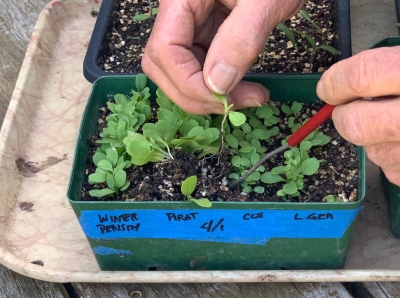
Nice germination of lettuce seeds
Planted too deep, a sprout from a tiny seed burns up what little energy it has before emerging and capturing sunlight to make energy via photosynthesis.
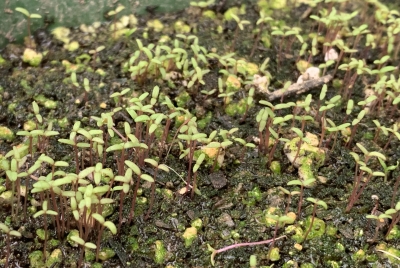
Portulaca seedlings from very tiny seeds
Moonlight isn’t bright enough for good plant growth. No matter. A lot less light is needed to wake up a seed than to grow a plant. Years ago, U. S. Department of Agriculture scientists investigated the influence of tillage on weeds. They determined that tilling the soil, which brings buried weed seeds up to the surface, was best done at night by a new moon (when there was as little light as possible). Tilling in the dark led to less weed-seed germination and thus to fewer weeds in the garden.
My approach has been to forgo late hours and purchase of night-vision goggles, and instead to avoid ever tilling my garden. I wrote about this system in my book Weedless Gardening (available from the usual sources or signed from me at www.leereich.com/books).
Let’s turn now to other effects, or possible effects of the moon on plants. Blaming lunar gravity for good or bad seed germination presents some fundamental weak points. For instance, ocean tides occur because gravitational attraction is a function of distance, resulting in a differential pull of lunar (and solar) gravity between the side of the earth closest to, and the side farthest from the moon. But the two sides of a seed are only a fraction of an inch different in distance from the moon, so tidal effects in seeds are negligible.
On the other hand, there’s no question that the moon has an effect on such phenomena as barometric pressure, temperature, and cosmic radiation flux. Carefully controlled experiments have detected periodicities in plants, such as water uptake by seeds, shoot growth, nutrient uptake, and respiration.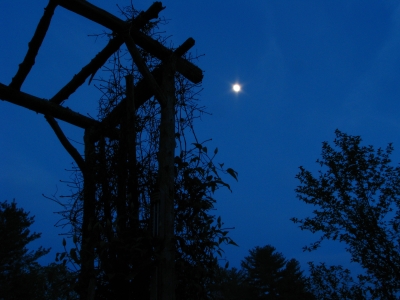
The periodicity of these responses is rarely in simple harmony with only lunar cycles. There seem to be other cosmic influences at work. The zodiac, perhaps? Scientists concede that influences from the heavens affect plant growth, and these “pervasive geophysical factors” (a catchall phrase from one scientific journal) probably are mediated via radiation to the earth and/or water in the plant or the environment.
A large gulf exists between an experiment showing water uptake by beans varying over the course of a month and instructions that tell me that the best day to sow bean seeds is on May 17. With that said, some time around mid-May is when I drop bean seeds into furrows in my garden.
The whole area of moon gardening may be worthy of further investigation and perhaps backyard experimentation. It’s a good thing our planet has only one moon.
(Plant Sale at my New Paltz, NY farmden on May 21, 2023. More info soon.)


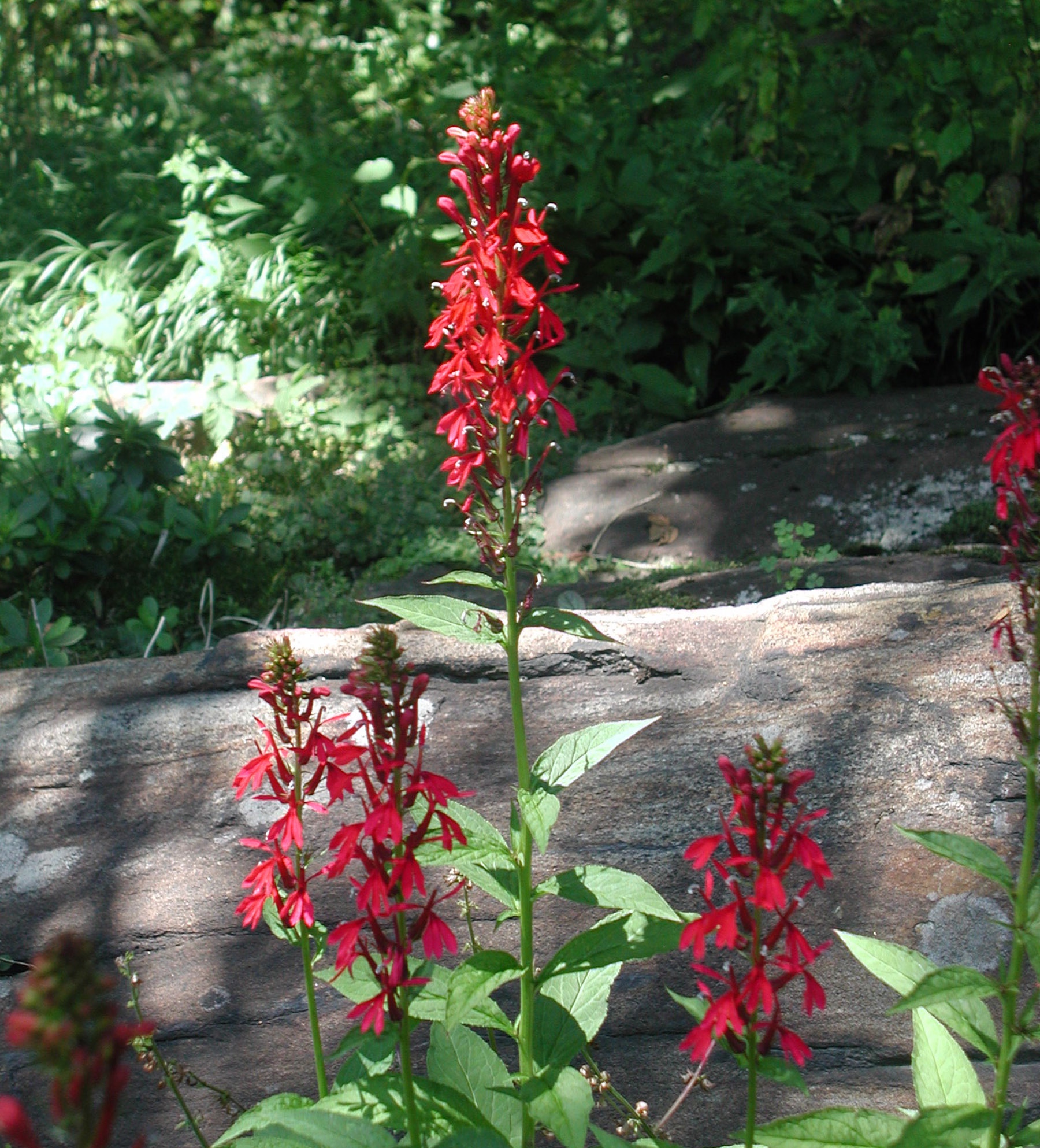

Follow up to my previous email. You think I’d know by now to check the voice dictation on my phone before sending a message. I just hate the way it mis-manages all the punctuation. Here is the correct version of my comment.
Surprised you didn’t take up the subject of biodynamics here, since it is all about this.
Some of the best wine growers in Italy and France use these principles in their vineyards. I always try to get those wines.
One reason I didn’t take it up is because I don’t want to offend anyone. Biodynamic gardens and farms have all looked great too me — but not, I believe, due to considerations of moon phases and herbal mixtures prepared in cow horns by the light of a full moon. Biodynamicists do pay close attention to their plants, which is all important.
Yeah, This post has a good title.
(Smiley face)